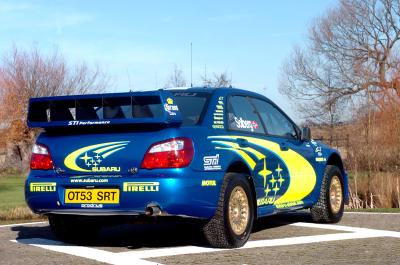Team talk: Aerodynamics and the WRC.
In pure performance terms, aerodynamics are more important for circuit race cars than rally cars. While average speeds on a circuit might be as high as 200kph, on a rally they are nearer 100kph.
Aerodynamic forces are proportional to the square of the speed, so at 200kph the aerodynamic forces are four times greater than they are at 100kph.
In pure performance terms, aerodynamics are more important for circuit race cars than rally cars. While average speeds on a circuit might be as high as 200kph, on a rally they are nearer 100kph.
Aerodynamic forces are proportional to the square of the speed, so at 200kph the aerodynamic forces are four times greater than they are at 100kph.
Since the 1997 WRC regulations were introduced, teams predominantly focused on development inside the car, such as the engine, chassis and weight distribution. But with competition between WRC cars now closer than ever before, teams are looking at all details that can make a difference - including aerodynamics.
At 160kph, airflow around an average road car can produce 100kgs of lift, which generates less grip when cornering and braking. New aerodynamic features on the Subaru Impreza WRC2004, such as it's front bumper, rear wing and cooling system, are designed to ensure the air flow over the car produces downforce and increases stability.
When a rally car travels sideways, aerodynamic devices can become less effective and the car can lose grip. The Subaru Impreza WRC's unique rear wing has been designed to ensure that it produces downforce, even when the car is travelling at a sideways angle.
Engine cooling is another aerodynamic consideration. On slower rallies, such as Cyprus where the average speed can be as low as 67kph, keeping engine temperatures under control requires the maximum possible airflow through the radiators and coolers. In contrast, when a rally car moves through faster sections, too much air directed for cooling purposes can become a drag penalty and reduce the top speed.
To overcome this, the mounting angle of the engine radiator in the Subaru Impreza WRC2004 has been positioned to assist efficient airflow, while a ducted system vents hot air from the turbo intercooler upwards through a slot in the bonnet.


![Johann Zarco, LCR, Honda RC213V, 2024 San Marino MotoGP, Misano, action [Gold & Goose]](https://cdn.crash.net/styles/thumbnail/s3/2024-09/GnG_1166323_HiRes.jpg?itok=vpgrU7Q4)

![Jack Miller, KTM Factory Racing, KTM RC16, San Marino MotoGP, Misano, action [Gold & Goose]](https://cdn.crash.net/styles/thumbnail/s3/2024-09/GnG_1167624_HiRes.jpg?itok=iz7mA4EQ)


![Fabio Quartararo, Monster Energy Yamaha Racing, Yamaha M1, 2024 MotoGP, Misano Test, action [Gold & Goose]](https://cdn.crash.net/styles/thumbnail/s3/2024-09/GnG_1168928_HiRes.jpg?itok=fcYSole_)
![Toprak Razgatlioglu, ROKiT BMW Motorrad, BMW M 1000 RR, Magny-Cours, WorldSBK [Gold & Goose]](https://cdn.crash.net/styles/thumbnail/s3/2024-09/GnG_1165133_HiRes.jpg?itok=GD5SVNVG)

